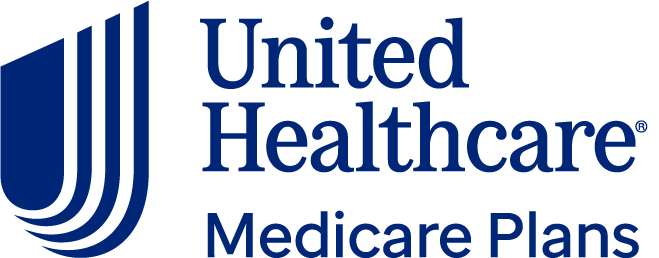How Do I Sign Up for Medicare?
Enrollment in Medicare is automatic if you get Social Security. Otherwise, you need to apply for Medicare.

Many, or all, of the products featured on this page are from our advertising partners who compensate us when you take certain actions on our website or click to take an action on their website. However, this does not influence our evaluations. Our opinions are our own. Here is a list of our partners and here's how we make money.
If you’re getting Social Security, you’ll be signed up for Medicare automatically.
If you’re not getting Social Security, you’ll need to apply for Medicare.
You can apply for Medicare online, over the phone or in person at your local Social Security office.
You can apply for Medicare by contacting Social Security, or you may be automatically enrolled when you become eligible at age 65. Here's how it works.
How to sign up for Medicare
If you're receiving Social Security benefits
If you’ve received Social Security for at least four months before age 65, you’ll automatically get Medicare Part A and Part B when you turn 65. You’ll have the option to delay Part B if you have other qualifying health coverage.
If you’ve applied for Social Security, but you haven’t gotten benefits for that long, you’ll automatically be enrolled in Medicare Part A when you become eligible for Medicare. You’ll have to apply for Part B.
If you're not getting Social Security yet
If you aren't receiving Social Security yet, you can apply for Medicare once you're eligible in one of three ways:
Apply for Medicare online at the Social Security website. (This is the fastest method.)
Call Social Security at 800-772-1213. (TTY 800-325-0778.)
Contact your local Social Security office.
The online application typically takes less than 10 minutes. Visiting a local Social Security office could mean waiting in a long line, and the Social Security Administration encourages people not to show up without an appointment.

If you're disabled and under age 65
Medicare is also available to younger people who get Social Security disability benefits, or SSDI. Usually, they’re enrolled in Medicare automatically after 24 months of disability benefit eligibility.
» MORE: Who qualifies for Medicare?
People who have Lou Gehrig’s disease, also known as amyotrophic lateral sclerosis or ALS, automatically receive Medicare coverage the same month they get their first disability check. People with kidney failure, or end-stage renal disease, can apply for Medicare, with coverage typically starting on the first day of the fourth month of dialysis treatments. Retroactive start dates are common, going back as many as 12 months. If certain conditions are met, the waiting period may be waived.
People with end-stage renal disease getting a kidney transplant are eligible for Medicare the month they’re admitted for the transplant or for pre-transplant services.
Shopping for Medicare plans? We have you covered.

3.95
CMS Star Rating
from UnitedHealthcare

3.63
CMS Star Rating
When to apply for Medicare
If you’re not enrolled automatically, you should sign up for Medicare in the three months before your 65th birthday. That way, coverage will start on the first day of your birthday month (unless you were born on the first day of the month, in which case coverage begins on the first day of the prior month).
You technically have seven months around your 65th birthday to enroll: the three months before your birthday month, your birthday month and the three months after. This is called your initial enrollment period. If your birthday is the first of the month, your initial enrollment period includes the four months before your birthday month and two months after.
If you wait until your birthday month or the three months afterward to apply for Medicare, your coverage will start the following month. If you miss your initial window, you will need to sign up during Medicare's general enrollment period. However, you may be subject to a permanent penalty unless you have continuous coverage from a large employer group health insurance plan.
What documents do you need to apply for Medicare?
When you apply for Medicare, you’ll need your Social Security number, the city where you were born and your health insurance information, including start and end employment dates for the employer providing group health insurance as well as start and end dates for the insurance itself.
If you’re not a U.S. citizen, you’ll need your Permanent Resident Card number. If you’ve been on Medicaid, you’ll need start and end dates for that.
If you’re applying for only Medicare Part B, you’ll need an email address and your Medicare number.
Applying for Medicare during the general enrollment period
If you don't apply for Medicare during your initial enrollment period for Parts A and B and you're not eligible for a special enrollment period, you'll have to wait for Medicare's general enrollment period to sign up. This is different from the annual open enrollment period, which runs from Oct. 15 to Dec. 7 each year.
The general enrollment period runs from Jan. 1 to March 31 every year. Coverage doesn't start until the month after you sign up, and late penalties may apply. You will also pay for any health costs you incur during the time you were uninsured before your coverage begins.
Medicare late enrollment penalties
If you’re not automatically enrolled in Medicare and you don’t apply on time, you may face late enrollment fees:
Medicare Part A: If you must buy Part A and you don’t purchase it during your initial enrollment period, you may owe 10% more than the monthly premium for twice the time period you didn’t sign up.
Medicare Part B: If you don’t sign up for Part B during your initial enrollment period, your monthly premium increases 10% for each 12-month period that you went without Part B coverage. This is a permanent penalty as long as you have Part B.
Medicare Part D: If you go without Medicare drug coverage or other creditable prescription drug coverage for 63 or more days once your initial enrollment period ends, you'll be assessed a permanent penalty for as long as you have Medicare drug coverage. The penalty is calculated as 1% of the “national base beneficiary premium” multiplied by the number of full months you weren’t covered. (There is no cap. If you don’t think you need Part D for 72 months, that’s a 72% penalty.) Your exact penalty amount is recalculated each year.
What happens after you sign up for Medicare
After you sign up for Medicare, you’ll be mailed a Medicare welcome kit explaining how Parts A and B work and how to shop for additional coverage. You’ll also get your red, white and blue Medicare card. (Don’t throw it away — it’s not junk mail.)
The date your coverage starts will depend on when you sign up for Medicare:
When you sign up for Medicare | When your Medicare coverage starts |
|---|---|
Before the month of your 65th birthday.* | The month you turn 65. |
The month you turn 65 or during the three months after. | The next month. |
During the general enrollment period, which runs Jan. 1 to March 31 each year. | The month after you sign up. |
During a special enrollment period. | The next month. |
*If your birthday is on the first of the month, your coverage will start on the first day of the month before your birthday month. For example, if you turn 65 on Aug. 1, your coverage will start July 1. | |
Medicare coverage always starts on the first day of the month. If you’re unsure of when you can sign up for Medicare, check your specific situation with Medicare directly.
What Medicare covers
Medicare covers a lot of things — but not everything. Find out where Medicare stands in the following areas:











